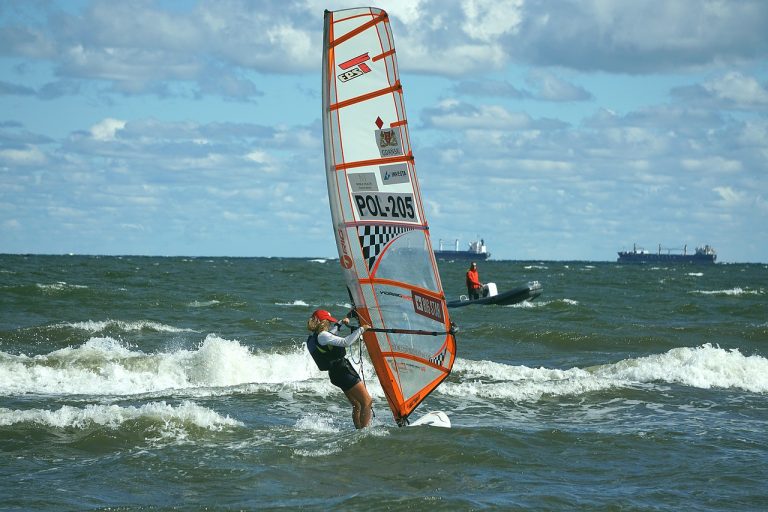General Rules of Synchronized Swimming
Mastering the meticulous maneuvers of synchronized swimming requires adherence to a set of general rules that govern the sport's technical precision and artistic expression. From intricate formation requirements to impeccable synchronization standards, each element plays a vital role in the overall performance. But what truly separates the champions from the rest lies in the fine balance between technical excellence and creative flair. As you dive deeper into the realm of synchronized swimming, you'll discover the intricacies that make this aquatic art form a mesmerizing spectacle worth exploring.
Scoring Criteria
When judging synchronized swimming performances, the scoring criteria are crucial in determining the athletes' success. From the judges' perspective, they evaluate two main components: artistic interpretation and the technical execution of movements. The scoring system is designed to reward creativity, precision, and synchronization among team members.
Artistic interpretation plays a significant role in the judges' scoring process. It involves assessing the overall performance's creativity, musicality, and emotional expression. Teams must convey a theme or story through their choreography, costumes, and facial expressions to captivate the audience and the judges. The ability to interpret the music and translate it into movements that evoke emotions is key to achieving high scores in this category.
On the other hand, the technical execution is equally important in the scoring criteria. Judges focus on the difficulty levels of the movements, the precision of execution, and the synchronization among team members. Athletes must perform intricate figures, lifts, and transitions seamlessly to demonstrate their skill and coordination. The more challenging the routine, the higher the potential score if executed flawlessly.
Understanding the judges' perspective and the importance of balancing artistic interpretation with technical proficiency is crucial for synchronized swimming teams aiming for success. By mastering both aspects and pushing the boundaries of creativity and skill, athletes can achieve remarkable performances that captivate both the judges and the audience.
Formation Requirements
To ensure a synchronized swimming routine meets the necessary standards, specific formation requirements must be meticulously followed by the team members. In synchronized swimming, formations play a crucial role in creating a visually stunning and cohesive performance. These formations involve precise coordination and seamless transitions among team members to elevate the overall routine. Here is a breakdown of key aspects related to formation requirements:
| Formation Transitions | Team Patterns |
|---|---|
| Smooth transitions between formations are essential to maintain the flow of the routine. | Team patterns refer to the specific arrangements and shapes that the swimmers create during the performance. |
| Formation Changes | Position Coordination |
| Changes in formations should be executed in a synchronized manner to avoid disruptions in the routine. | Position coordination is vital for ensuring that all team members are in the correct positions at the right times. |
Technical Elements
When it comes to synchronized swimming, mastering key technical skills is essential for success. You must focus on synchronization and precision to ensure a seamless performance with your team. Understanding routine composition techniques will further elevate your routines and enhance your overall performance.
Key Technical Skills
Mastering the key technical skills in synchronized swimming requires precise coordination and fluid movement. To excel in this sport, you need to focus on honing your basic techniques and advancing your moves. Here are some essential skills to work on:
- Eggbeater Kick: Achieving a strong and steady eggbeater kick is crucial for maintaining an upright position in the water.
- Vertical Positioning: Learning to maintain a vertical position with your head above the water is essential for executing various moves gracefully.
- Sculling: Mastering different sculling techniques with your hands helps in creating propulsion and stability in the water.
- Body Alignment: Ensuring proper body alignment while performing intricate routines enhances the overall aesthetics and efficiency of your movements.
Synchronization and Precision
Ever wondered how synchronized swimmers achieve impeccable coordination and precision in their technical elements? Precision and coordination are the backbone of synchronized swimming routines. To execute these technical elements flawlessly, swimmers must be in perfect sync with each other, moving as one cohesive unit. Here's a breakdown of how synchronization and precision are achieved:
| Key Aspect | Description | Importance |
|---|---|---|
| Timing | Movements must be timed perfectly to create a seamless routine. | Ensures harmony and unity in the performance. |
| Body Position | Precise body positioning is essential for symmetry and visual appeal. | Enhances the aesthetic quality of the routine. |
| Transitions | Smooth transitions between movements maintain the flow of the routine. | Prevents disruptions and maintains the overall fluidity. |
| Eye Contact | Establishing eye contact helps swimmers stay connected and in tune with each other. | Strengthens the bond between team members. |
| Musicality | Synchronizing movements with the music adds an artistic touch to the performance. | Elevates the emotional impact of the routine. |
Routine Composition Techniques
To craft captivating synchronized swimming routines, mastering the technical elements of routine composition is essential for achieving a seamless and visually stunning performance. When creating your routine, consider the following techniques:
- Theme Development: Infuse your routine with a compelling theme that resonates with the audience, creating a cohesive and engaging performance.
- Creative Transitions: Smooth and imaginative transitions between movements and formations add a layer of sophistication to your routine, keeping the audience hooked.
- Emotional Storytelling: Incorporate emotive elements into your choreography to connect with the audience on a deeper level, evoking a range of feelings throughout the performance.
- Dynamic Formations: Experiment with dynamic formations to add depth and complexity to your routine, showcasing the team's versatility and skill in executing intricate patterns.
Routine Duration
When it comes to synchronized swimming routines, understanding the time limits is crucial. You will need to pay close attention to the duration allowed for each performance. Additionally, selecting the right music can greatly impact the overall effect of your routine.
Time Limits for Routines
For synchronized swimming routines, there are specific time limits that competitors must adhere to. These time limits are crucial to ensure fairness and efficiency during competitions. Here are some key points to keep in mind regarding routine durations:
- Precision: Each routine must not exceed a certain time limit to showcase the swimmers' precision and synchronization.
- Creativity: Competitors need to balance creativity challenges within the designated time frame to impress the judges.
- Innovation: Choreographic innovation plays a significant role in routines, requiring swimmers to stay within the time limits while pushing boundaries.
- Musicality: Maintaining musicality balance throughout the routine is essential, and staying within the time constraints helps achieve this harmonious blend.
Importance of Music
The rhythmic cadence of the music in synchronized swimming routines sets the tempo for swimmers, guiding their movements and enhancing the overall performance. Musical interpretation plays a crucial role in expressing the choreography of the routine, allowing swimmers to convey emotions and themes effectively. Rhythmic coordination is essential in ensuring that movements are synchronized with the music, creating a visually captivating performance. The emotional connection between the swimmers and the music adds depth and intensity to the routine, captivating the audience and judges alike. By carefully selecting music that resonates with the swimmers and complements their movements, a powerful synergy is achieved, elevating the overall impact of the synchronized swimming performance.
Synchronization Standards
To achieve impeccable synchronization in synchronized swimming routines, performers must practice diligently and maintain precise timing throughout every movement. Synchronization standards play a crucial role in elevating the overall performance. Here are some key elements to focus on:
- Mirroring Movements: Imagine a perfectly mirrored image where every arm extension, leg kick, and head tilt is replicated simultaneously by all team members.
- Breath Control: Picture a synchronized group taking a collective deep breath before submerging underwater, moving gracefully in harmony without missing a beat.
- Fluid Transitions: Envision seamless transitions between different formations and movements, like a well-oiled machine moving effortlessly from one position to another.
- Unity of Expression: Consider the emotional connection between team members as they convey the artistic elements of the routine with uniform facial expressions and body language, showcasing a shared passion for the performance.
Music and Choreography
When considering synchronized swimming routines, the selection of music and choreography significantly influences the overall impact and synchronization of the performance. In synchronized swimming, music and choreography work hand in hand to create a captivating and seamless routine. The musical interpretation sets the tone for the performance, guiding the swimmers through their movements, while creative formations showcase the team's coordination and artistic flair.
To better understand how music and choreography come together in synchronized swimming, let's look at the following table:
| Aspects | Description | Importance |
|---|---|---|
| Costume Selection | The choice of costumes can enhance the theme of the routine and aid in movement fluidity. | High |
| Movement Dynamics | Synchronized swimmers must move in harmony with the music, showcasing precise and dynamic movements. | Essential |
| Musical Interpretation | The team must interpret the music accurately, reflecting its mood and rhythm in their routine. | Crucial |
| Creative Formations | Unique and innovative formations add visual appeal and complexity to the routine. | Significant |
| Synchronization | The music and choreography must be synchronized perfectly to create a cohesive and impactful performance. | Vital |
In synchronized swimming, the combination of music and choreography is the key to a successful routine, highlighting the team's skill, creativity, and synchronization.
Attire and Presentation
Choosing the right attire and presenting oneself effectively are crucial aspects of synchronized swimming routines. The costume design and performance makeup play a significant role in enhancing the overall performance. Here are some key points to consider for attire and presentation:
- Costume Design: The costume worn during a synchronized swimming routine should be eye-catching, yet functional. It should allow for freedom of movement while also complementing the theme of the routine. Bright colors, sequins, and unique designs are commonly used to make a statement in the water.
- Performance Makeup: Makeup is not just for aesthetics but also serves a practical purpose in synchronized swimming. Waterproof makeup is essential to prevent smudging and ensure a polished look throughout the routine. Bold eyeliners, vibrant eyeshadows, and long-lasting lip colors help the swimmers' expressions stand out even from a distance.
- Hair Styling: Hair is often styled in intricate designs to add to the overall visual appeal of the routine. Braids, buns, and elaborate updos are popular choices to keep hair out of the swimmers' faces while adding an elegant touch to their look.
- Accessories: From headpieces to wristbands, accessories can elevate the performance by adding an extra flair to the swimmers' appearance. However, it's essential to ensure that accessories are securely fastened to avoid any distractions during the routine.
Judging Process
Attire and presentation set the stage for synchronized swimmers, but understanding the judging process is essential for achieving success in competitions. The judging process in synchronized swimming is meticulous and plays a crucial role in determining the outcome of a performance. Competitors are evaluated based on technical merit, artistic impression, and overall execution of their routines. Judges consider elements such as synchronization, difficulty of movements, and choreography in their assessments.
During competitions, judges use a scoring system to provide feedback to competitors. This feedback process involves assigning numerical scores to different aspects of the performance, including figures, patterns, and transitions. Each judge independently evaluates the routine and then the scores are combined to determine the final result. It's important for synchronized swimmers to understand the judging criteria and strive for excellence in each element of their performance.
Receiving feedback from judges is an opportunity for swimmers to identify strengths and areas for improvement. This information can be used to refine routines, enhance synchronization, and elevate artistic expression. By actively engaging in the feedback process, swimmers can continuously evolve and elevate their performance quality. Ultimately, a thorough understanding of the judging process is essential for synchronized swimmers aiming to excel in the competitive world of synchronized swimming.
Frequently Asked Questions
Can Competitors Wear Makeup or Accessories During a Synchronized Swimming Routine?
Sure, you can totally rock makeup and accessories during a synchronized swimming routine! Let your style shine underwater. Just make sure it's secure, waterproof, and won't distract from your flawless moves.
Are There Any Specific Rules Regarding the Use of Props or Equipment in Synchronized Swimming Routines?
When crafting your synchronized swimming routine, remember prop guidelines and equipment restrictions, ensuring safety and fairness. Costume regulations and makeup limitations may vary, so check the specific rules for your competition to create a captivating performance.
How Are Ties Broken in Synchronized Swimming Competitions?
In synchronized swimming, ties are broken based on judging criteria. If two routines score the same, judges evaluate elements like synchronization, difficulty, and artistic impression to determine the winner. It's a detailed scoring system.
Are There Any Age Restrictions for Participating in Synchronized Swimming Competitions?
In the world of synchronized swimming, age restrictions might vary, ensuring fair competition. When it comes to makeup and accessories, guidelines exist to balance safety and artistic expression, adding flair to routines.
What Is the Process for Registering a Team for a Synchronized Swimming Competition?
To register a team for a synchronized swimming competition, gather your squad and complete the registration process outlined by the event organizers. Ensure all competition requirements are met, and select your team members strategically for synchronized success.






